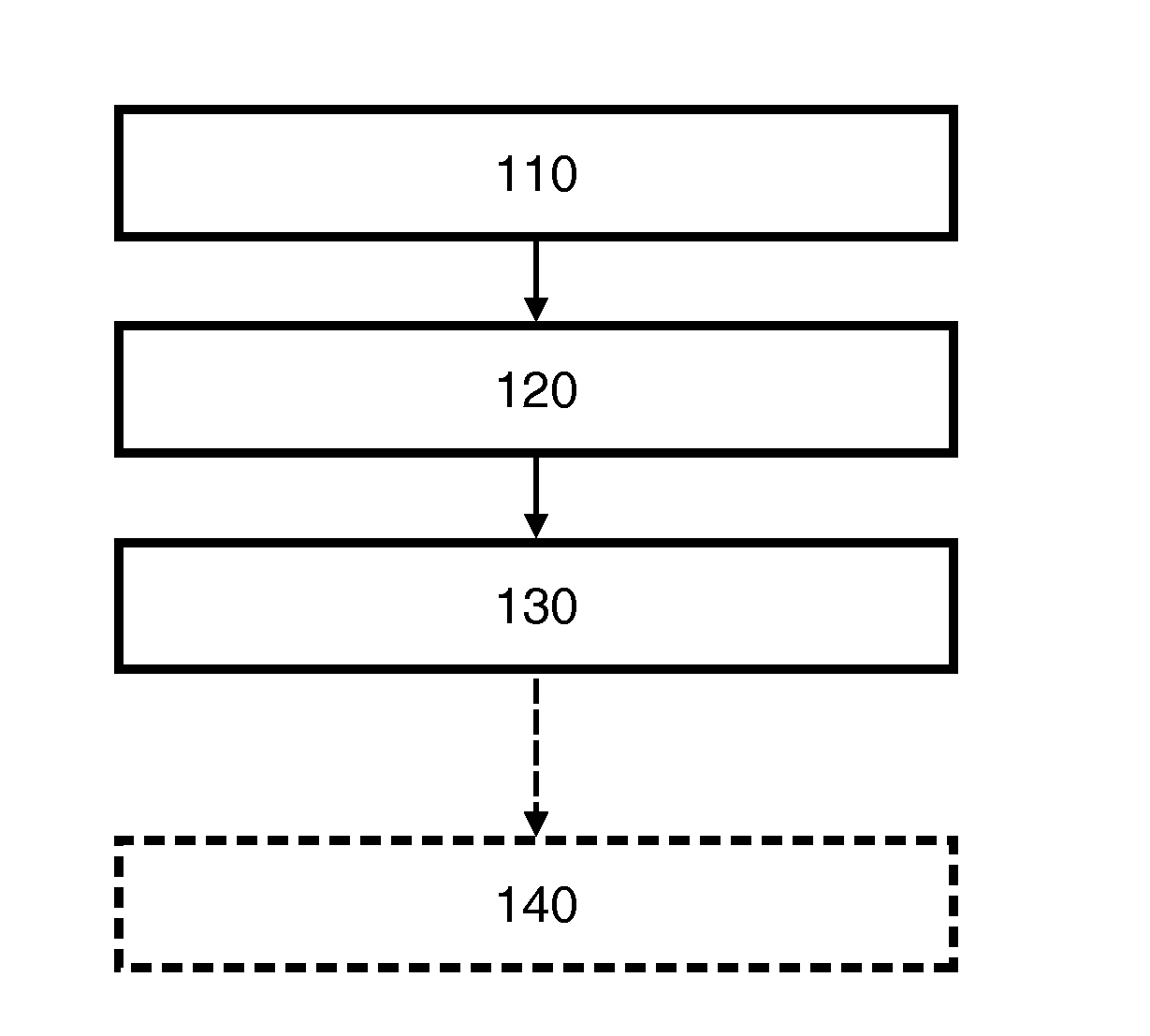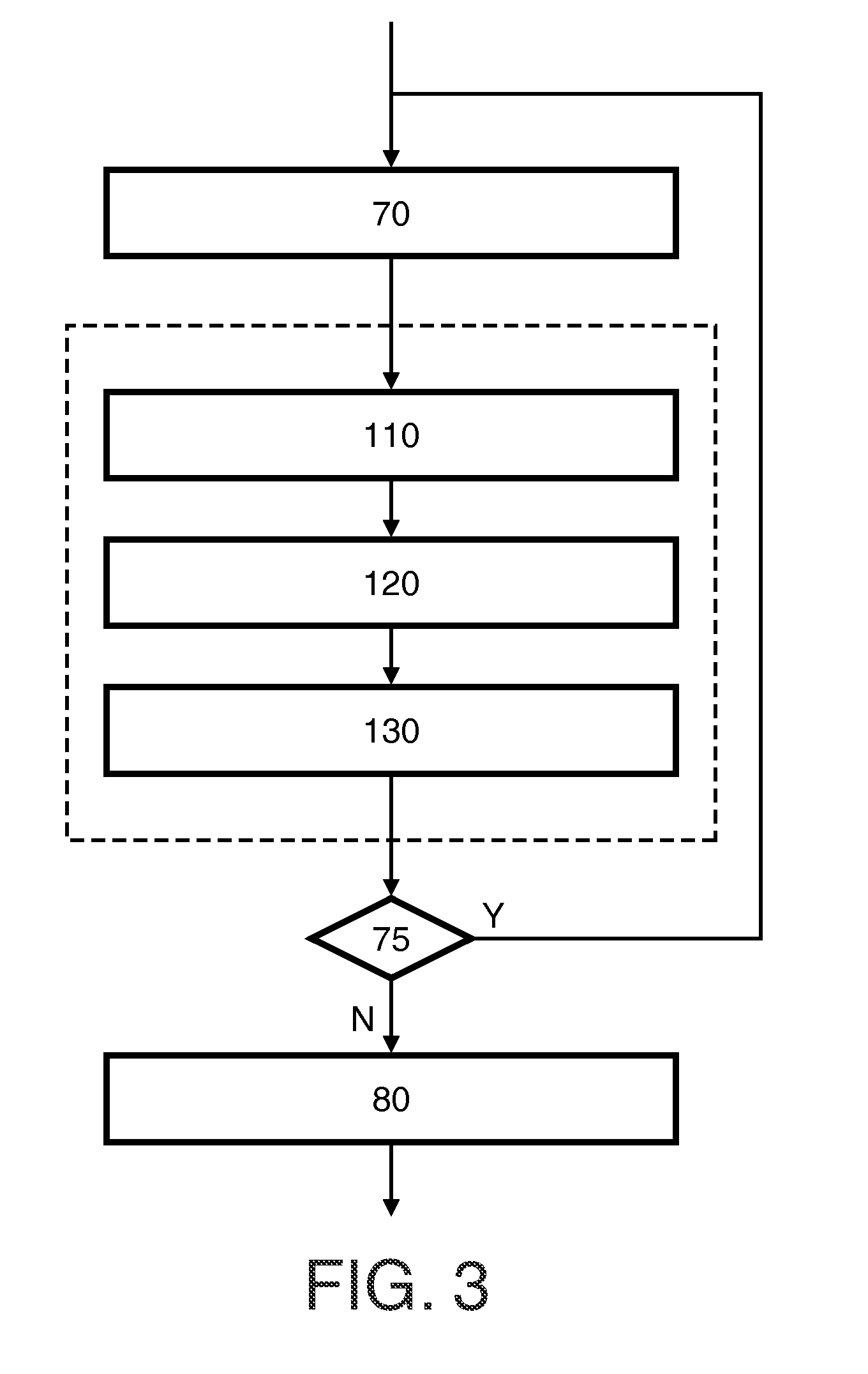Estimating temperature of memory elements
a technology of memory elements and temperature, applied in the field of estimating temperature of memory elements, can solve the problems of not being able to determine the temperature, needing an additional temperature sensor, etc., and achieve the effect of determining the actual temperature more accurately and increasing the temperature dependence of the valu
- Summary
- Abstract
- Description
- Claims
- Application Information
AI Technical Summary
Benefits of technology
Problems solved by technology
Method used
Image
Examples
first embodiment
[0043]FIG. 2 shows a flow diagram illustrating the method according to the invention. The method must preferably be applied to a plurality of memory elements wherein at least part of the memory elements has a temperature-dependent probability of assuming a particular bit value. As illustrated above, the memory elements may be selected from the group comprising: an SRAM memory, a DRAM memory, and flip-flops (i.e. D flip-flops).
[0044]A first step 110 of the method comprises the triggering of the assuming of the particular bit value of the plurality of memory elements. The triggering may be done by initiating an operating state transition. For example, the triggering may be done by switching the plurality of memory elements on, if the memory elements are SRAM memory cells or flip-flops. Alternatively, the triggering may be done by letting charge leak away (preventing refresh, so effectively switching the SRAM memory cells off for a while) from DRAM memory cells for a predefined period ...
second embodiment
[0048]FIG. 3 shows a flow diagram illustrating the method according to the invention. This embodiment of the method constitutes a method of calibration for determining the dependency, which method comprises the earlier described process steps 110, 120, 130. This sequence of steps is, in this example, repeated for different temperatures. However, if the general shape of a dependency is known, and only the absolute value of the dependency is unknown, the repetition of the process steps is not required. In such situation, the dependency can be simply determined by measuring the value indicative of the temperature at a single temperature, i.e. the environmental temperature of a factory. This particular value together with the known slope of the dependency uniquely determines the dependency. Before the steps 110, 120, 130 are carried out a setting step 70 is carried out in which the temperature is set to a predefined level. After setting of the temperature the steps 110, 120, 130 are car...
third embodiment
[0052]FIG. 6 shows a block diagram of the system according to the invention wherein an implementation of the mapping circuitry 24 is discussed in more detail. It may be advantageous to first perform, before designing the mapping circuitry 24, the method as illustrated in FIG. 3 in order to determine the dependency of the value Vact on the temperature T. Once this dependency is known, it may be stored in a suitable form, i.e. as part of the mapping circuitry 24. In FIG. 6 the dependency is stored in storage means 25. The storage means 25 may be an internal component, but may also be an external component. The mapping circuitry 24 comprises converter circuitry 23 that compares the value Vact with the stored dependency Vact(T) and generates the corresponding temperature T on its output. Alternatively, mapping circuitry 24 may be implemented such that it performs a further function on the value Vact such that the corresponding temperature T is obtained. In order to do so the further fun...
PUM
 Login to View More
Login to View More Abstract
Description
Claims
Application Information
 Login to View More
Login to View More - R&D
- Intellectual Property
- Life Sciences
- Materials
- Tech Scout
- Unparalleled Data Quality
- Higher Quality Content
- 60% Fewer Hallucinations
Browse by: Latest US Patents, China's latest patents, Technical Efficacy Thesaurus, Application Domain, Technology Topic, Popular Technical Reports.
© 2025 PatSnap. All rights reserved.Legal|Privacy policy|Modern Slavery Act Transparency Statement|Sitemap|About US| Contact US: help@patsnap.com



